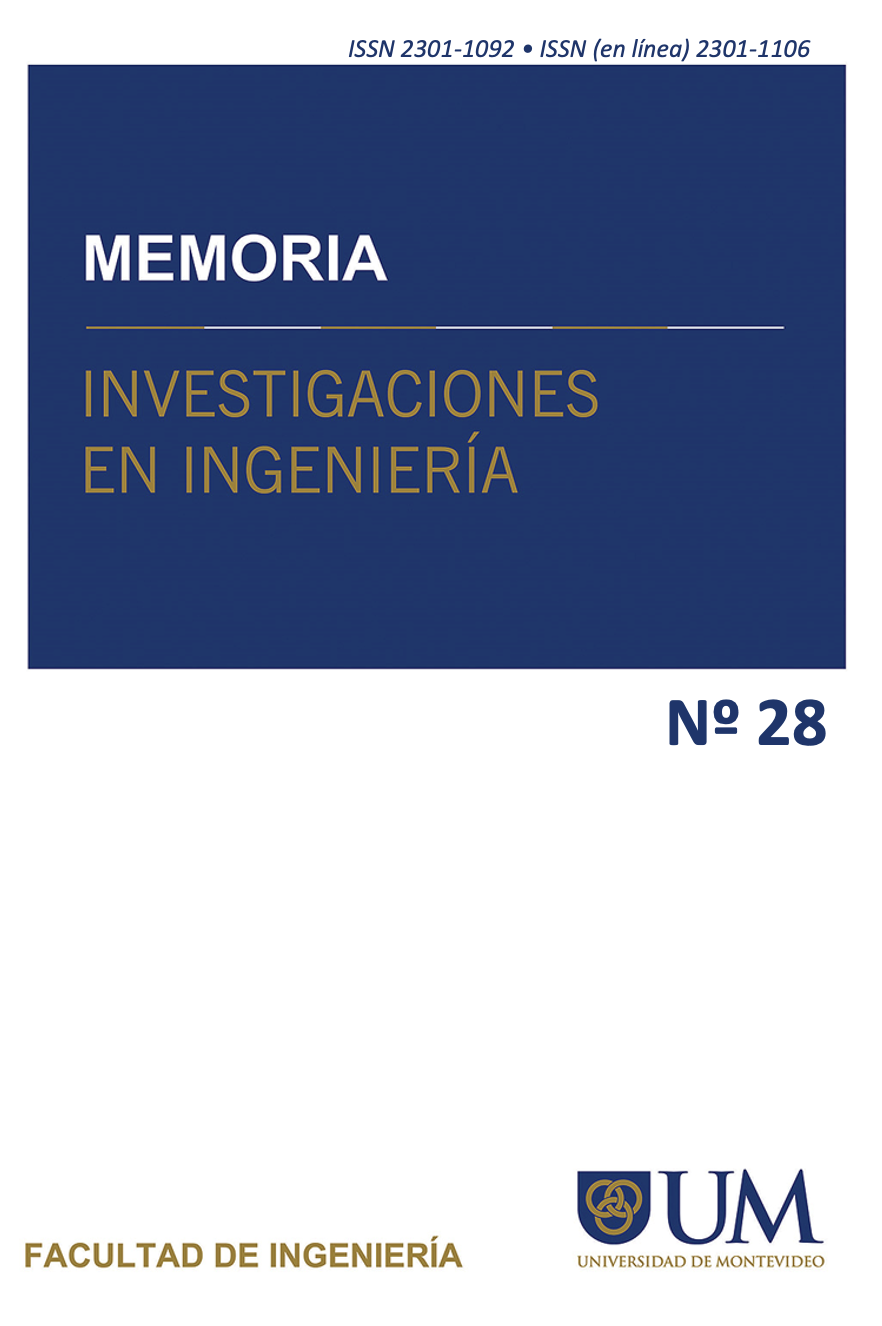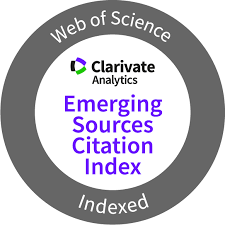Polymer Pathways
un enfoque sostenible para la eliminación de residuos plásticos
DOI:
https://doi.org/10.36561/ING.28.2Palabras clave:
Tereftalato de polietileno (PET), Asfalto, Aglutinante, Estabilidad Marshall, Residuos plásticos, Áridos, Betún, Contenido óptimo de aglutinanteResumen
Pakistán es un país repleto de recursos naturales, pero debido a su agotamiento gradual, el país busca aprovechar el uso de diferentes materiales que puedan cumplir su propósito con un costo mínimo. Nuestro país genera anualmente 3,3 millones de toneladas de residuos plásticos. La eliminación de estos residuos es uno de los desafíos más importantes para las principales áreas metropolitanas del mundo. Si no se gestiona de inmediato, podría degradarse en el medio ambiente durante muchos años. Este estudio propone el uso de botellas de PET desechadas en la construcción de carreteras. El objetivo principal es analizar y comparar las propiedades de las carreteras con asfalto mezclado con plástico frente a las de asfalto mezclado sin plástico. Se mezclaron botellas de plástico trituradas con asfalto en diferentes proporciones (0 %, 6 %, 8 % y 10 %) para mejorar la estabilidad y durabilidad de las carreteras. Se realizaron diversas pruebas de laboratorio, como pruebas de estabilidad Marshall, penetración, ductilidad y ablandamiento. Los resultados mostraron que el asfalto con un 8 % de plástico tiene un bajo índice de fluidez. Además, el modificador plástico del asfalto aumenta la densidad de la mezcla, lo que mejora el rendimiento estructural del pavimento asfáltico. Hay un aumento en el punto de ablandamiento que ilustra que las carreteras de betún modificado con plástico pueden soportar el clima cálido de manera más efectiva que las carreteras de betún tradicionales. Esta adición de plástico al betún será una bendición para la industria vial de Pakistán
Descargas
Citas
A. H. Mir, ‘Use of Plastic Waste in Pavement Construction: An Example of Creative Waste management’.
O. Alabi, K. Ologbonjaye, O. Awosolu, and O. Alalade, ‘Public and Environmental Health Effects of Plastic Wastes Disposal: A Review’, J. Toxicol. Risk Assess., vol. 5, Apr. 2019, doi: https://doi.org/10.23937/2572-4061.1510021.
A. Babafemi, B. Šavija, S. Paul, and V. Anggraini, ‘Engineering Properties of Concrete with Waste Recycled Plastic: A Review’, Sustainability, vol. 10, no. 11, p. 3875, Oct. 2018, doi: 10.3390/su10113875.
V. Sahajwalla and V. Gaikwad, ‘The present and future of e-waste plastics recycling’, Curr. Opin. Green Sustain. Chem., vol. 13, pp. 102–107, Oct. 2018, doi: https://doi.org/10.1016/j.cogsc.2018.06.006.
M. Kazemi, S. Faisal Kabir, and E. H. Fini, ‘State of the art in recycling waste thermoplastics and thermosets and their applications in construction’, Resour. Conserv. Recycl., vol. 174, p. 105776, Nov. 2021, doi: https://doi.org/10.1016/j.resconrec.2021.105776.
X.-Q. Xu, S. Liao, and Y. Wang, ‘Recycling of Thermosetting Plastics’, in Recent Developments in Plastic Recycling, J. Parameswaranpillai, S. Mavinkere Rangappa, A. Gulihonnehalli Rajkumar, and S. Siengchin, Eds., in Composites Science and Technology. , Singapore: Springer, 2021, pp. 95–119. doi: https://doi.org/10.1007/978-981-16-3627-1_5.
M. E. Grigore, ‘Methods of Recycling, Properties and Applications of Recycled Thermoplastic Polymers’, Recycling, vol. 2, no. 4, Art. no. 4, Dec. 2017, doi: 10.3390/recycling2040024.
S. Nizamuddin, M. Jamal, R. Gravina, and F. Giustozzi, ‘Recycled plastic as bitumen modifier: The role of recycled linear low-density polyethylene in the modification of physical, chemical and rheological properties of bitumen’, J. Clean. Prod., vol. 266, p. 121988, Sep. 2020, doi: https://doi.org/10.1016/j.jclepro.2020.121988.
F. Welle, ‘The fats about PET (update 2018)’, 2018.
R. Nisticò, ‘Polyethylene terephthalate (PET) in the packaging industry’, Polym. Test., vol. 90, p. 106707, Oct. 2020, doi: https://doi.org/10.1016/j.polymertesting.2020.106707.
B. Mishra and M. K. Gupta, ‘Use of plastic waste in bituminous mixes by wet and dry methods’, Proc. Inst. Civ. Eng. - Munic. Eng., vol. 173, no. 2, pp. 87–97, Jun. 2020, doi: https://doi.org/10.1680/jmuen.18.00014.
A. K. Sahu and R. K. Singh, ‘Application of Waste Plastic Materials in Road Construction’, 2016.
P. N. A. Asare, F. A. Kuranchie, and E. A. Ofosu, ‘Evaluation of incorporating plastic wastes into asphalt materials for road construction in Ghana’, Cogent Environ. Sci., vol. 5, no. 1, p. 1576373, Jan. 2019, doi: https://doi.org/10.1080/23311843.2019.1576373.
M. Sasidharan, M. E. Torbaghan, and M. Burrow, ‘Using Waste Plastics in Road Construction’, May 2019, Accessed: Sep. 05, 2023. [Online]. Available: https://opendocs.ids.ac.uk/opendocs/handle/20.500.12413/14596
A. Biswas, A. Goel, and S. Potnis, ‘Performance comparison of waste plastic modified versus conventional bituminous roads in Pune city: A case study’, Case Stud. Constr. Mater., vol. 13, p. e00411, Dec. 2020, doi: https://doi.org/10.1016/j.cscm.2020.e00411.
A. Biswas and S. Potnis, ‘Plastic Bituminous Roads: A Sustainable Technology–For Better Handling Distresses’, Eur. J. Eng. Technol. Res., vol. 7, no. 1, pp. 63–69, 2022.
S. B. Abd Karim et al., ‘Plastic Roads in Asia: Current Implementations and Should It Be Considered?’, Materials, vol. 16, no. 16, Art. no. 16, Jan. 2023, doi: https://doi.org/10.3390/ma16165515.
A. M. Zaltuom, ‘A Review Study of The Effect of Air Voids on Asphalt Pavement Life’, in Proceedings of First Conference for Engineering Sciences and Technology: Vol. 2, AIJR Publisher, Nov. 2018, pp. 618–625. doi: https://doi.org/10.21467/proceedings.4.29.
M. M. Shah, J. Yousaf, U. Khalid, H. Li, J.-J. Yee, and S. A. Z. Naqvi, ‘Plastic roads: asphalt mix design and performance’, Discov. Appl. Sci., vol. 6, no. 4, p. 195, Apr. 2024, doi: https://doi.org/10.1007/s42452-024-05772-x.
‘Standard Test Method for Marshall Stability and Flow of Asphalt Mixtures’. [Online]. Available: https://www.astm.org/d6927-15.html
https://trendeconomy.com/data/h2/Pakistan/2714,".
“Petroleum Corporation limited, Pakistan”.























